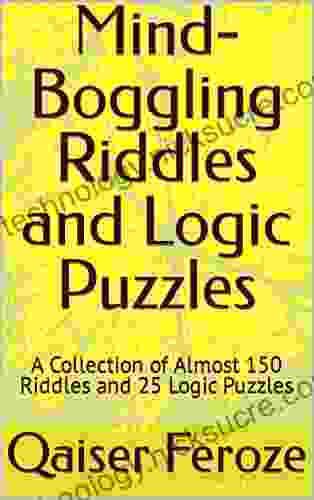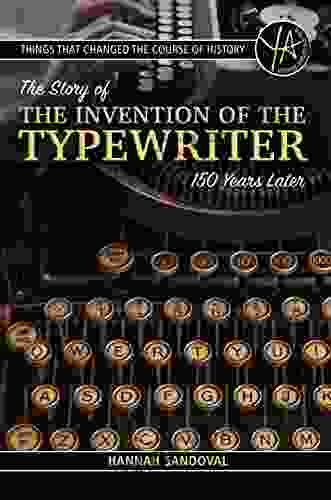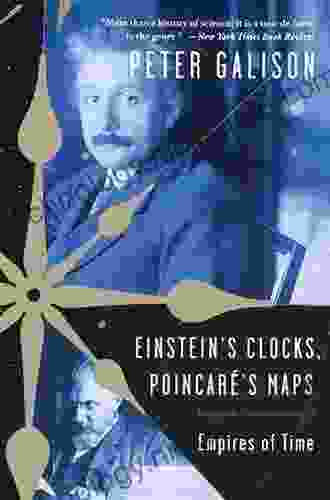Einstein Clocks and Poincaré Maps: A Journey through Time and Space

In the realm of physics, time and space are intricately intertwined, forming the fabric of our universe. Einstein's theory of special relativity revolutionized our understanding of these concepts, introducing the idea that time is not absolute but relative to the observer's motion. This profound insight opened up a new era of exploration in the study of time and its relationship to gravity, spacetime curvature, and the cosmos.
4.4 out of 5
| Language | : | English |
| File size | : | 5455 KB |
| Text-to-Speech | : | Enabled |
| Screen Reader | : | Supported |
| Enhanced typesetting | : | Enabled |
| Word Wise | : | Enabled |
| Print length | : | 393 pages |
In this article, we will delve into the fascinating world of Einstein clocks and Poincaré maps. These tools have played a pivotal role in shaping our understanding of the universe and have applications in various fields, including celestial navigation, GPS technology, orbital mechanics, and cosmology.
Einstein Clocks: Time Dilation and Gravitational Redshift
Imagine two identical clocks, one placed on the ground and the other sent on a high-speed journey through space. According to special relativity, the clock in motion will run slower than the clock at rest. This phenomenon is known as time dilation. The faster the clock moves, the slower it will run.
Einstein clocks are used to measure this time dilation effect. By comparing the time kept by a clock on Earth with a clock placed in a satellite orbiting the planet, scientists have experimentally verified the predictions of special relativity.
In addition to motion, gravity can also affect the rate at which clocks run. The stronger the gravitational field, the slower time flows. This effect is known as gravitational redshift. It has been observed in astronomical objects such as white dwarf stars, neutron stars, and black holes.
Poincaré Maps: Unveiling the Chaos of Celestial Motion
Poincaré maps are a graphical tool used to study the long-term behavior of celestial bodies, such as planets, moons, and asteroids. These maps are created by plotting the position and velocity of an object over time.
In simple terms, a Poincaré map is like a snapshot of an object's trajectory in phase space, which is a mathematical representation of all possible states of an object. By analyzing the shape and structure of Poincaré maps, scientists can determine whether an object's motion is regular or chaotic.
Regular motion is characterized by stable orbits, where the object moves around a central body in a predictable pattern. Chaotic motion, on the other hand, is characterized by unpredictable and complex trajectories.
Poincaré maps have been used to study a wide range of celestial phenomena, including the motion of planets in our solar system, the dynamics of galaxies, and the chaotic behavior of asteroids in the asteroid belt.
Applications in Celestial Navigation and GPS Technology
Einstein clocks and Poincaré maps have practical applications in celestial navigation and GPS technology. In celestial navigation, mariners use the positions of stars and planets to determine their location on Earth. By accounting for time dilation, mariners can accurately calculate their longitude.
GPS (Global Positioning System) technology relies on a network of satellites orbiting Earth. Each satellite carries an atomic clock, which is extremely precise. By measuring the time it takes for signals from multiple satellites to reach a GPS receiver, the receiver can determine its position on Earth with great accuracy.
Orbital Mechanics and Spacetime Curvature
In orbital mechanics, Einstein clocks and Poincaré maps are used to study the motion of satellites and spacecraft. By understanding the effects of time dilation and gravitational redshift, scientists can design spacecraft trajectories that minimize fuel consumption and maximize efficiency.
The curvature of spacetime also affects the motion of celestial bodies. According to general relativity, massive objects like planets and stars curve spacetime around them. This curvature can alter the trajectories of other objects passing nearby.
Poincaré maps have been used to visualize the effects of spacetime curvature on the motion of spacecraft and planets. By studying these maps, scientists can gain insights into the gravitational interactions between celestial bodies.
Gravitational Waves and Black Holes
Gravitational waves are ripples in spacetime caused by the acceleration of massive objects. These waves travel at the speed of light and carry information about the objects that produced them.
Einstein clocks and Poincaré maps can be used to detect and study gravitational waves. By comparing the time kept by clocks located at different distances from a gravitational wave source, scientists can infer the properties of the wave, such as its amplitude and frequency.
Black holes are regions of spacetime where gravity is so strong that nothing, not even light, can escape. The intense gravitational field of a black hole causes time to slow down significantly near its event horizon, the point of no return.
Poincaré maps have been used to visualize the motion of objects near black holes. These maps show how the curvature of spacetime around a black hole can lead to chaotic and unpredictable trajectories.
Cosmology and Astrophysics
Einstein clocks and Poincaré maps have also found applications in cosmology and astrophysics. In cosmology, these tools are used to study the expansion of the universe and the evolution of galaxies.
In astrophysics, Einstein clocks and Poincaré maps are used to model the behavior of stars, galaxies, and other astronomical objects. These models help scientists understand the processes that drive the birth, evolution, and death of stars and galaxies.
Einstein clocks and Poincaré maps are powerful tools that have revolutionized our understanding of time, space, and gravity. These tools have wide-ranging applications in celestial navigation, GPS technology, orbital mechanics, and cosmology.
As scientists continue to explore the depths of the universe, Einstein clocks and Poincaré maps will undoubtedly play a crucial role in unraveling the mysteries that lie ahead. From the behavior of black holes to the evolution of galaxies, these tools will continue to shape our understanding of the cosmos.
4.4 out of 5
| Language | : | English |
| File size | : | 5455 KB |
| Text-to-Speech | : | Enabled |
| Screen Reader | : | Supported |
| Enhanced typesetting | : | Enabled |
| Word Wise | : | Enabled |
| Print length | : | 393 pages |
Do you want to contribute by writing guest posts on this blog?
Please contact us and send us a resume of previous articles that you have written.
 Fiction
Fiction Non Fiction
Non Fiction Romance
Romance Mystery
Mystery Thriller
Thriller SciFi
SciFi Fantasy
Fantasy Horror
Horror Biography
Biography Selfhelp
Selfhelp Business
Business History
History Classics
Classics Poetry
Poetry Childrens
Childrens Young Adult
Young Adult Educational
Educational Cooking
Cooking Travel
Travel Lifestyle
Lifestyle Spirituality
Spirituality Health
Health Fitness
Fitness Technology
Technology Science
Science Arts
Arts Crafts
Crafts DIY
DIY Gardening
Gardening Petcare
Petcare P J Agness
P J Agness Paul Trammell
Paul Trammell David N Schwartz
David N Schwartz Gabriel Levy
Gabriel Levy Pamela K Lamb
Pamela K Lamb Alex Reinhart
Alex Reinhart Lynn Alley
Lynn Alley Peter Maguire
Peter Maguire Tiffany Dionne
Tiffany Dionne Peter Matthiessen
Peter Matthiessen Deirdre Martin
Deirdre Martin Teresa Denton
Teresa Denton Richard M Foxx
Richard M Foxx Howard Schor
Howard Schor Amber Lia
Amber Lia Walter Gretzky
Walter Gretzky Ari Mennander
Ari Mennander Mary Lynne Fernandez
Mary Lynne Fernandez John Stage
John Stage Suzie Sheehy
Suzie Sheehy Douglas Doman
Douglas Doman Wesley Bernardini
Wesley Bernardini Fretta Reitzes
Fretta Reitzes L R Trovillion
L R Trovillion Gabriyell Sarom
Gabriyell Sarom Qaiser Feroze
Qaiser Feroze Alfred P Rovai
Alfred P Rovai Kristin Gambaccini
Kristin Gambaccini Darin Ingels
Darin Ingels Albert Rutherford
Albert Rutherford Vasti Torres
Vasti Torres Earl Swift
Earl Swift Emma Hansen
Emma Hansen Jennifer Kramer
Jennifer Kramer Stormie Omartian
Stormie Omartian Leigh Hatts
Leigh Hatts Diana L Paxson
Diana L Paxson Robertson Tait
Robertson Tait Jenna Gottlieb
Jenna Gottlieb Sarah Ockwell Smith
Sarah Ockwell Smith Alexander Clarke
Alexander Clarke Mark Warren
Mark Warren Namita Prasad
Namita Prasad Aaron Robinet
Aaron Robinet Steve Bechtel
Steve Bechtel Katrina M Adams
Katrina M Adams Jennifer Cohen Harper
Jennifer Cohen Harper Sabbithry Persad Mba
Sabbithry Persad Mba David Shinar
David Shinar Chuck Norris
Chuck Norris Harold Klemp
Harold Klemp Alex Guarnaschelli
Alex Guarnaschelli Hannah Arendt
Hannah Arendt George E Vaillant
George E Vaillant Kevin Bales
Kevin Bales Thomas Cahill
Thomas Cahill Alexa Whitewolf
Alexa Whitewolf Larry Pardey
Larry Pardey Alex Johnson
Alex Johnson Rebecca Wilson
Rebecca Wilson Pittacus Lore
Pittacus Lore John Boyette
John Boyette Derrick Niederman
Derrick Niederman Devin Devasquez
Devin Devasquez Gary Nicol
Gary Nicol Simon Monk
Simon Monk Stephon Alexander
Stephon Alexander Fiaz Rafiq
Fiaz Rafiq Lisa Manterfield
Lisa Manterfield Gf Denehy
Gf Denehy Jennet Conant
Jennet Conant Peter J Feibelman
Peter J Feibelman Andrew Stellman
Andrew Stellman Garth Nix
Garth Nix Aman Gupta
Aman Gupta Yannis Detorakis
Yannis Detorakis F T Lukens
F T Lukens Stephen R Lawhead
Stephen R Lawhead Jacqueline Tourville
Jacqueline Tourville Dipika Mukherjee
Dipika Mukherjee Richard Cole
Richard Cole Alex Hibbert
Alex Hibbert Ben Malisow
Ben Malisow Q S Khan
Q S Khan Aleksandr Anufriyev
Aleksandr Anufriyev Sabine Hossenfelder
Sabine Hossenfelder Hadley Wickham
Hadley Wickham R K Gupta
R K Gupta Alexander Jones
Alexander Jones Don Bendell
Don Bendell Sally Moomaw
Sally Moomaw Tracy Brown Collins
Tracy Brown Collins Russ Unger
Russ Unger Soo Kim Abboud
Soo Kim Abboud Alan Lightman
Alan Lightman Lyn Kelley
Lyn Kelley Brent Herrick
Brent Herrick Darl Kuhn
Darl Kuhn Aubrey Sherman
Aubrey Sherman Sam Jalloh
Sam Jalloh Ken Schultz
Ken Schultz Pascal Boyer
Pascal Boyer Kathleen Mcmillan
Kathleen Mcmillan Richard Shotton
Richard Shotton Jennifer Van Allen
Jennifer Van Allen Alexander Boxer
Alexander Boxer Phil Jarratt
Phil Jarratt Chris Englert
Chris Englert Michael Teitelbaum
Michael Teitelbaum Jeff Galloway
Jeff Galloway Kinsey Phifer
Kinsey Phifer James Johonnot
James Johonnot Laura Morton Rd
Laura Morton Rd Brett Cohen
Brett Cohen Phil Pierce
Phil Pierce John Quick
John Quick Thomas Jaden
Thomas Jaden Stanley Cohen
Stanley Cohen Genese Marie Sodikoff
Genese Marie Sodikoff Hal Higdon
Hal Higdon Glenn Rivers
Glenn Rivers Pekka Louhiala
Pekka Louhiala Kalynn Bayron
Kalynn Bayron Jenny Mackay
Jenny Mackay Rajesh K Naz
Rajesh K Naz Josh Bryant
Josh Bryant Rough Guides
Rough Guides Jacob Sannox
Jacob Sannox Hannah V Holmes
Hannah V Holmes Ernest T Stringer
Ernest T Stringer Katherine Leigh
Katherine Leigh Mine Dogucu
Mine Dogucu Douglas D Scott
Douglas D Scott Scott L Smith
Scott L Smith Denny Matthews
Denny Matthews Albert Hofmann
Albert Hofmann Jimmy Connors
Jimmy Connors Barbara Ehrenreich
Barbara Ehrenreich Martin Baldridge
Martin Baldridge Moh Kolli Carnet
Moh Kolli Carnet Steve Flink
Steve Flink Robert Penn
Robert Penn Suzanne Collins
Suzanne Collins Nancy Marie Brown
Nancy Marie Brown Pedro Domingos
Pedro Domingos Bob Palmer
Bob Palmer Alex Pentland
Alex Pentland Mia King
Mia King Alessio Mangoni
Alessio Mangoni Alexander Ferrauti
Alexander Ferrauti Stan Utley
Stan Utley Jase Robertson
Jase Robertson C J Brown
C J Brown Janie B Butts
Janie B Butts Kent David Kelly
Kent David Kelly Sky Marsen
Sky Marsen Kevin Mcaleer
Kevin Mcaleer Christina Riggs
Christina Riggs Julian B Barbour
Julian B Barbour Will Hart
Will Hart Dr Rebecca Harwin
Dr Rebecca Harwin John Thorne
John Thorne Willard A Palmer
Willard A Palmer Carla Naumburg
Carla Naumburg Lara S Ormiston
Lara S Ormiston Celeste Headlee
Celeste Headlee Celia Hodent
Celia Hodent Megan Carle
Megan Carle Robert Spindler
Robert Spindler Oluwaseun Ajayi
Oluwaseun Ajayi John Burroughs
John Burroughs David Borgenicht
David Borgenicht Linda Egenes
Linda Egenes Mark Creasy
Mark Creasy Michael Digiacomo
Michael Digiacomo Alex J Gutman
Alex J Gutman Jennifer Estep
Jennifer Estep Margaret Willson
Margaret Willson Arieh Ben Naim
Arieh Ben Naim Suzanna Mcgee
Suzanna Mcgee Scott Turansky
Scott Turansky Alex Wolf
Alex Wolf Peter Brown
Peter Brown G Blake Meike
G Blake Meike Steve Warner
Steve Warner Jeremy Kubica
Jeremy Kubica Robbie Couch
Robbie Couch Upgraded Brain
Upgraded Brain Sally Huss
Sally Huss Sara Shepard
Sara Shepard Gordon Feinberg
Gordon Feinberg Kristen Jane Anderson
Kristen Jane Anderson J C Herz
J C Herz Amanda Epperson
Amanda Epperson Albert S Tarendash
Albert S Tarendash Alexander Mccall Smith
Alexander Mccall Smith Audra Fordin
Audra Fordin Chella Man
Chella Man Janja Lalich
Janja Lalich Stephan Martin
Stephan Martin Jim Hynes
Jim Hynes Ernest Hemingway
Ernest Hemingway Geza Vermes
Geza Vermes James Patterson
James Patterson Michael Terry
Michael Terry Janine Marsh
Janine Marsh Daniel Shapiro
Daniel Shapiro Nancy Silverton
Nancy Silverton Victoria Wilson
Victoria Wilson Laura Pavlov
Laura Pavlov Peter Ross
Peter Ross C C Hunter
C C Hunter J Richard Hackman
J Richard Hackman Eli Burakian
Eli Burakian Danielle Tumminio Hansen
Danielle Tumminio Hansen David N Myers
David N Myers Titania Hardie
Titania Hardie Philip Wylie
Philip Wylie Laura Eckert
Laura Eckert Robert W Winters
Robert W Winters Michael Sandler
Michael Sandler L Michele Issel
L Michele Issel Stephen L Sass
Stephen L Sass Angelo Tropea
Angelo Tropea Olivier Doleuze
Olivier Doleuze Richard D Easton
Richard D Easton Luis Angel Echeverria
Luis Angel Echeverria Raj Kumar
Raj Kumar Daniel Defoe
Daniel Defoe Duncan Butchart
Duncan Butchart Scott Kelly
Scott Kelly Alexander Mackenzie
Alexander Mackenzie Joe Nobody
Joe Nobody Albert Ellis
Albert Ellis Victor Davis Hanson
Victor Davis Hanson Linda White
Linda White Patrick F Mcmanus
Patrick F Mcmanus Alistair Moffat
Alistair Moffat Tim Cahill
Tim Cahill Sheryl Buckland
Sheryl Buckland Cosmic Kids Publications
Cosmic Kids Publications Daniel L Everett
Daniel L Everett Jerry C Whitaker
Jerry C Whitaker Phil Keith
Phil Keith Saxon Andrew
Saxon Andrew George Marshall
George Marshall Ben Ainslie
Ben Ainslie Terry Marsh
Terry Marsh Albert Marrin
Albert Marrin W C Mcrae
W C Mcrae Sareen S Gropper
Sareen S Gropper Bill Haggerty
Bill Haggerty Loriann Oberlin
Loriann Oberlin Elizabeth White
Elizabeth White Anne Bogel
Anne Bogel Alex Gillis
Alex Gillis Dan Purser Md
Dan Purser Md Eric Enge
Eric Enge Nikki Nichols
Nikki Nichols Howard Carter
Howard Carter Cecil B Hartley
Cecil B Hartley Lonely Planet
Lonely Planet Christie Cognevich
Christie Cognevich George Ehrenhaft
George Ehrenhaft David Leadbetter
David Leadbetter Mark Golds
Mark Golds Karen Casey
Karen Casey Wallace Wang
Wallace Wang Robert L Wolke
Robert L Wolke Joan Wulff
Joan Wulff Leonhard Euler
Leonhard Euler Donald D Hoffman
Donald D Hoffman Anatoli Boukreev
Anatoli Boukreev Graham Hancock
Graham Hancock Fridtjof Nansen
Fridtjof Nansen Martha Sears
Martha Sears Alex J Packer
Alex J Packer Chanice Lee
Chanice Lee Ralph Vacchiano
Ralph Vacchiano Shannon Jett
Shannon Jett Alex Polyakov
Alex Polyakov Mark Reed
Mark Reed Lake E High
Lake E High Greg Michaelson
Greg Michaelson Alberto Villoldo
Alberto Villoldo Georgiann Davis
Georgiann Davis Alda Sigmundsdottir
Alda Sigmundsdottir Amy Newmark
Amy Newmark John Kretschmer
John Kretschmer K D Hume
K D Hume Nate Silver
Nate Silver Michael Clary
Michael Clary Alex Zimmerman
Alex Zimmerman Alex Harris
Alex Harris Judy Dutton
Judy Dutton Robert Dos Remedios
Robert Dos Remedios Nate Orlowek
Nate Orlowek Alexander Bennett
Alexander Bennett Henrik Beyer
Henrik Beyer David G Kleinbaum
David G Kleinbaum Brent Zwerneman
Brent Zwerneman Sarah Lynne Bowman
Sarah Lynne Bowman River
River David J Chalmers
David J Chalmers Paul Volponi
Paul Volponi Kathryn Purdie
Kathryn Purdie Alberta Hawse
Alberta Hawse Phil Hanrahan
Phil Hanrahan Morgan Lyle
Morgan Lyle Stephen K Hayes
Stephen K Hayes Game Spark
Game Spark Sam Sheridan
Sam Sheridan Alex Bellos
Alex Bellos Travis Eliot
Travis Eliot Jeana Jorgensen
Jeana Jorgensen Alexa Nicole Cucchiara
Alexa Nicole Cucchiara Alex Banks
Alex Banks Steve Helling
Steve Helling Caren Cooper
Caren Cooper Brad Borkan
Brad Borkan Daniel Pautrat
Daniel Pautrat Alex Wade
Alex Wade Kevin Gallagher
Kevin Gallagher Todd Denault
Todd Denault Mauricio Fau
Mauricio Fau Theodore X O Connell
Theodore X O Connell Alicia Ranoldo
Alicia Ranoldo Marilynn Hughes
Marilynn Hughes Elena Zotova
Elena Zotova Jerry C Zee
Jerry C Zee Dan Gookin
Dan Gookin Gail M Nelson
Gail M Nelson Anne Dachel
Anne Dachel Roy Plotnick
Roy Plotnick Michael Thompson
Michael Thompson Otto Kroeger
Otto Kroeger Bruce Johnson
Bruce Johnson Bertus Engelbrecht
Bertus Engelbrecht James Suzman
James Suzman Marvin Harris
Marvin Harris Saunders Mac Lane
Saunders Mac Lane Marian Dewane
Marian Dewane Alfie Kohn
Alfie Kohn Milan Yerkovich
Milan Yerkovich Arshay Cooper
Arshay Cooper Albert W A Schmid
Albert W A Schmid Alex Light
Alex Light Phil Gaimon
Phil Gaimon Itzhak Bentov
Itzhak Bentov Alexander Meyer
Alexander Meyer Stephen Wilbers
Stephen Wilbers Alejandro Portes
Alejandro Portes Molly Knox Ostertag
Molly Knox Ostertag Eric R Kandel
Eric R Kandel David Thomas
David Thomas Paul Sating
Paul Sating Sophie David
Sophie David Gordon Rugg
Gordon Rugg Margaret Rooke
Margaret Rooke Ashton Cartwright
Ashton Cartwright Jon B Gould
Jon B Gould Julie Berry
Julie Berry Peter Collier
Peter Collier Donnie Eichar
Donnie Eichar Winona Guo
Winona Guo Erin Bowe
Erin Bowe Tim Moore
Tim Moore Matt Johanson
Matt Johanson Michele Filgate
Michele Filgate Yang Erche Namu
Yang Erche Namu Aaron Reynolds
Aaron Reynolds Mary Ellen Hannibal
Mary Ellen Hannibal Jennifer Boyle
Jennifer Boyle S Kelley Harrell
S Kelley Harrell Thomas Sowell
Thomas Sowell Duncan Wells
Duncan Wells David Farrier
David Farrier Alexandra Bracken
Alexandra Bracken Kyle Rohrig
Kyle Rohrig Tetsu Kariya
Tetsu Kariya Jason R Rich
Jason R Rich Meredith Atwood
Meredith Atwood Derek Lundy
Derek Lundy Sarah Franklin
Sarah Franklin Hiro Ainana
Hiro Ainana Vanessa Van Edwards
Vanessa Van Edwards Kortney Keisel
Kortney Keisel Chukwuma Eleodimuo
Chukwuma Eleodimuo Rebecca Schrag Hershberg
Rebecca Schrag Hershberg Chip Heath
Chip Heath Beverleigh H Piepers
Beverleigh H Piepers Catherine Crier
Catherine Crier Idan Ravin
Idan Ravin Phyllis Good
Phyllis Good Alex Mars
Alex Mars Scott Butler
Scott Butler Zach Davis
Zach Davis Alex Riley
Alex Riley Alex Boese
Alex Boese Olivia Wildenstein
Olivia Wildenstein Diana Hopkins
Diana Hopkins Jim Davidson
Jim Davidson Eric Mason
Eric Mason Jules Wake
Jules Wake Rachael Ray
Rachael Ray Roseanne A Brown
Roseanne A Brown William R Short
William R Short Deborah L Davis
Deborah L Davis Ron Mckeefery
Ron Mckeefery Albert J Raboteau
Albert J Raboteau Keith H Basso
Keith H Basso Danielle Paige
Danielle Paige Ash Perrin
Ash Perrin Taylor Harris
Taylor Harris Dr Yvonne S Thornton
Dr Yvonne S Thornton Aleister Crowley
Aleister Crowley Eric Zandona
Eric Zandona Victoria Schwab
Victoria Schwab David L Demets
David L Demets Ellen Snortland
Ellen Snortland Ruth Minsky Sender
Ruth Minsky Sender Brigid Kemmerer
Brigid Kemmerer Scott Fratcher
Scott Fratcher Sarah Stewart Johnson
Sarah Stewart Johnson Alex Bezzerides
Alex Bezzerides Fataniss Store
Fataniss Store Kieran Mccarthy
Kieran Mccarthy Elon Vidal
Elon Vidal Anna Post
Anna Post Katie Edwards
Katie Edwards Jon Krakauer
Jon Krakauer Patrick Alan Danaher
Patrick Alan Danaher Heather Dale
Heather Dale Catherine Dawson
Catherine Dawson Kirsten Koza
Kirsten Koza Charlene L Edge
Charlene L Edge Richard Ronald
Richard Ronald Alessandro Valerani
Alessandro Valerani Philip Ball
Philip Ball Andrew Zerling
Andrew Zerling Alexander L Co
Alexander L Co Peter Galison
Peter Galison Don Pitcher
Don Pitcher Cary Nemeroff
Cary Nemeroff Patrick Taylor
Patrick Taylor Austin Murphy
Austin Murphy Scott Whitlock
Scott Whitlock Michele Gelfand
Michele Gelfand Dennis R Helsel
Dennis R Helsel Conn Iggulden
Conn Iggulden Stephanie Ermenegild
Stephanie Ermenegild Mark Sisson
Mark Sisson Gigi Georges
Gigi Georges Holly Black
Holly Black Robert Benson
Robert Benson Alex Morgan
Alex Morgan Dan Jacob
Dan Jacob Matthew Johnson
Matthew Johnson Thomas Huhti
Thomas Huhti Vimla L Patel
Vimla L Patel Tony Roig
Tony Roig Elissa Wall
Elissa Wall Julia Wertz
Julia Wertz Lisa Silverman
Lisa Silverman Alex Hunter
Alex Hunter Michael Steven
Michael Steven Gary Coleman
Gary Coleman Alex Itsios
Alex Itsios Brian Beffort
Brian Beffort Evan F Moore
Evan F Moore Kingsley Amis
Kingsley Amis
Light bulbAdvertise smarter! Our strategic ad space ensures maximum exposure. Reserve your spot today!

 James JoyceKitab-i-Íqán: An In-depth Exploration of Bahá'u'lláh's Masterpiece in James...
James JoyceKitab-i-Íqán: An In-depth Exploration of Bahá'u'lláh's Masterpiece in James...
 Vince HayesCollection of Almost 150 Riddles and 25 Logic Puzzles to Engage and Challenge...
Vince HayesCollection of Almost 150 Riddles and 25 Logic Puzzles to Engage and Challenge... Cade SimmonsFollow ·12.8k
Cade SimmonsFollow ·12.8k Levi PowellFollow ·3.8k
Levi PowellFollow ·3.8k Jacob HayesFollow ·6.9k
Jacob HayesFollow ·6.9k Samuel WardFollow ·4k
Samuel WardFollow ·4k Ivan CoxFollow ·9.4k
Ivan CoxFollow ·9.4k Grayson BellFollow ·5k
Grayson BellFollow ·5k Winston HayesFollow ·4.5k
Winston HayesFollow ·4.5k Hank MitchellFollow ·13.4k
Hank MitchellFollow ·13.4k

 Jeffrey Cox
Jeffrey CoxEasy Recipes And Meal Plans For Healthy Pregnancy
Congratulations on...

 Andy Cole
Andy ColeDive into the Fiery Ordeal and Mockingjay's Rebellion: An...
: A Captivating Dystopian Saga The...

 Ernest Powell
Ernest PowellLore Alexandra Bracken: Unveiling the Mastermind Behind...
: In the vast expanse of contemporary...

 T.S. Eliot
T.S. EliotThe Story of the Invention of the Typewriter: 150 Years...
The typewriter, a...
4.4 out of 5
| Language | : | English |
| File size | : | 5455 KB |
| Text-to-Speech | : | Enabled |
| Screen Reader | : | Supported |
| Enhanced typesetting | : | Enabled |
| Word Wise | : | Enabled |
| Print length | : | 393 pages |












